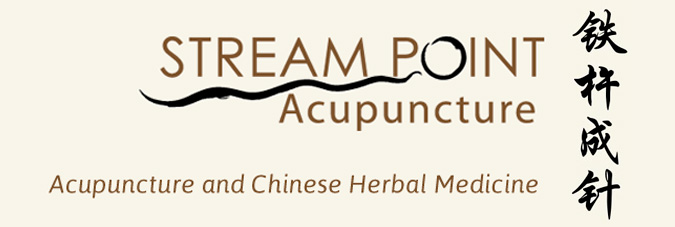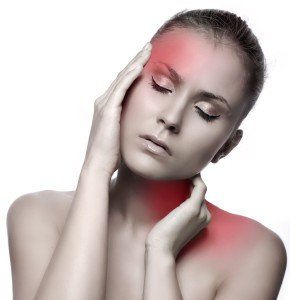 Last week, Andrea talked about the differences between Tension headaches and Migraines and her approaches to treating them from a TCM viewpoint, specifically with acupuncture treatments. This week I’m going to follow up with my approach to treating these kinds of headaches with various massage techniques.
Last week, Andrea talked about the differences between Tension headaches and Migraines and her approaches to treating them from a TCM viewpoint, specifically with acupuncture treatments. This week I’m going to follow up with my approach to treating these kinds of headaches with various massage techniques.
The Massage approach to Headaches:
When your head starts hurting, what’s the first thing you probably do? Do you reach up with your hands and start rubbing your temples or massage the back of your neck searching for those juicy spots? Why do you think that is? I know it sounds crazy, but that skull of yours isn’t just bone, skin, and hair; there’s actually quite a bit of muscle and fascia on your skull. When these areas become tight or tense, headaches can occur, and the natural response is to rub your head to relieve the tension…or, as I like to call it, MASSAGE. When massages are given by a trained massage therapist, they can effectively relieve pain while correcting the cause of the headache thereby preventing headaches in the future.
Pain Relief
How can massage help to alleviate and prevent headache pain? Well, the specific massage technique is different depending on the type of headache.
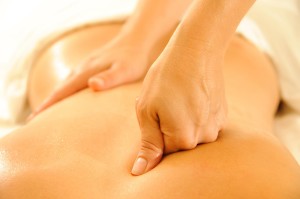 Tension Headache – If you are experiencing a tension headache, getting a full body massage tends to be best because it allows your central nervous system to relax, which is key to relaxing tense muscles. Most tension tends to settle in the back, neck, and shoulders, so targeting the full back, neck and head area is going to be beneficial because when these areas can relax, it helps to take the tension away from the head. I often use a combination of movements that go along the affected muscles to lengthen and relax them, and “cross fiber” movements that can break up any myofascial adhesions that are contributing to muscle tightness.
Tension Headache – If you are experiencing a tension headache, getting a full body massage tends to be best because it allows your central nervous system to relax, which is key to relaxing tense muscles. Most tension tends to settle in the back, neck, and shoulders, so targeting the full back, neck and head area is going to be beneficial because when these areas can relax, it helps to take the tension away from the head. I often use a combination of movements that go along the affected muscles to lengthen and relax them, and “cross fiber” movements that can break up any myofascial adhesions that are contributing to muscle tightness.
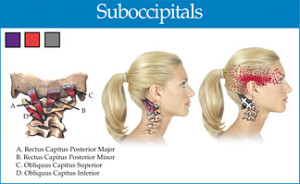 Migraine Headache – In the case of a migraine, the suboccipitals (the muscles situated at the base of the skull) and the upper trapezius tend to be major culprits in exacerbating migraine pain. The Suboccipitals are a group of 8 muscles that are constantly working to help support the neck. When under a tremendous amount of stress, all these muscles tend to become super tight. Massaging these muscles to help them to relax is a good start because it will take pressure off the areas that are involved with migraine pain. Also, massaging distal areas will draw blood away from the head, which can help ease the over-dilated blood vessels in the head.
Migraine Headache – In the case of a migraine, the suboccipitals (the muscles situated at the base of the skull) and the upper trapezius tend to be major culprits in exacerbating migraine pain. The Suboccipitals are a group of 8 muscles that are constantly working to help support the neck. When under a tremendous amount of stress, all these muscles tend to become super tight. Massaging these muscles to help them to relax is a good start because it will take pressure off the areas that are involved with migraine pain. Also, massaging distal areas will draw blood away from the head, which can help ease the over-dilated blood vessels in the head.
Also, one great thing about working with acupuncturists is my ability to apply TCM principles to my massages. Often times, massaging along the meridians and acupuncture points can harmonize the flow of energy and blood, which will also providing pain relief and healing to the affected areas.
Trigger Point Therapy is also something that’s effective for both tension headaches and migraine pain, the difference is just in the application of the approach. I will write a more comprehensive blog on trigger point therapy soon, but here is a basic breakdown:
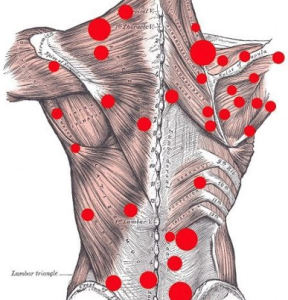 Trigger Points vs Tender Points:
Trigger Points vs Tender Points:
Tender points are “knots” in the muscles that cause localized pain, but a Trigger Point is a spot that causes not only localized pain, but also referred pain to other areas of the body. This is why that when working with migraines, there can be Trigger Points in the upper back or neck that will refer pain directly to the area that is in pain. When those trigger points can begin to relax, then the surrounding muscle tissue can start to relax, and so on and so on. With this relaxation, helps to regulate blood flow, which; ideally, allows the pain to begin to subside.
Other options:
Place a warm neck roll or washcloth around the back of your neck, if heat makes it worse, apply something cool (not ice though). A pack of frozen vegetables with a towel wrapped around may be sufficient. If tension is the main problem, heat will likely work better. If a classic migraine is the problem, ice may work but everybody is different. If you do use ice, follow it up with with heat to re-dilate the arteries to their proper size.
Place your feet in a bath of warm water; this will draw the blood away from your head to relieve the pressure of the over-dilated artery.
While laying down, place a Tennis Ball or Racquet ball at the base of your neck, find those spots that are more tense than others and just let your head rest for 8-12 seconds
Stress Management
As Andrea mentioned last week, stress is often the main trigger for both tension and migraine headaches. Learning to retrain your mind and body to better cope with stress is key to preventing headaches (and also a myriad of other conditions!) In addition to massage and acupuncture services, we have plenty of resources to help you cope with stress including relaxation exercises, yoga and qi gong classes, and educational materials. Talk to us about it next time you come in!

